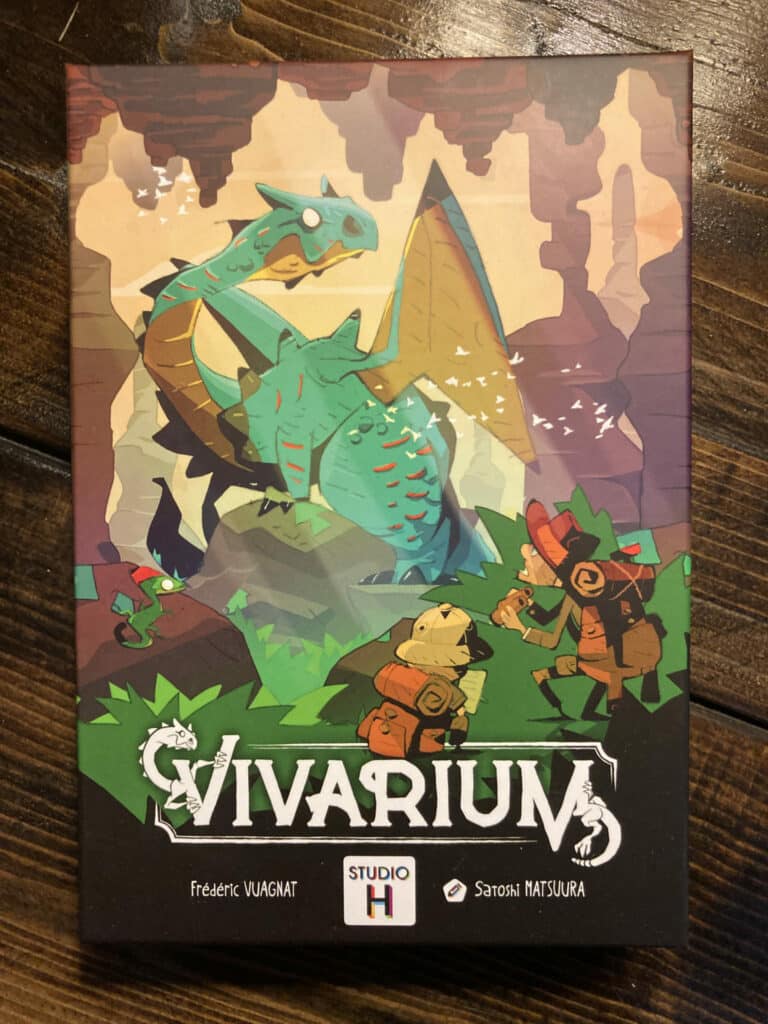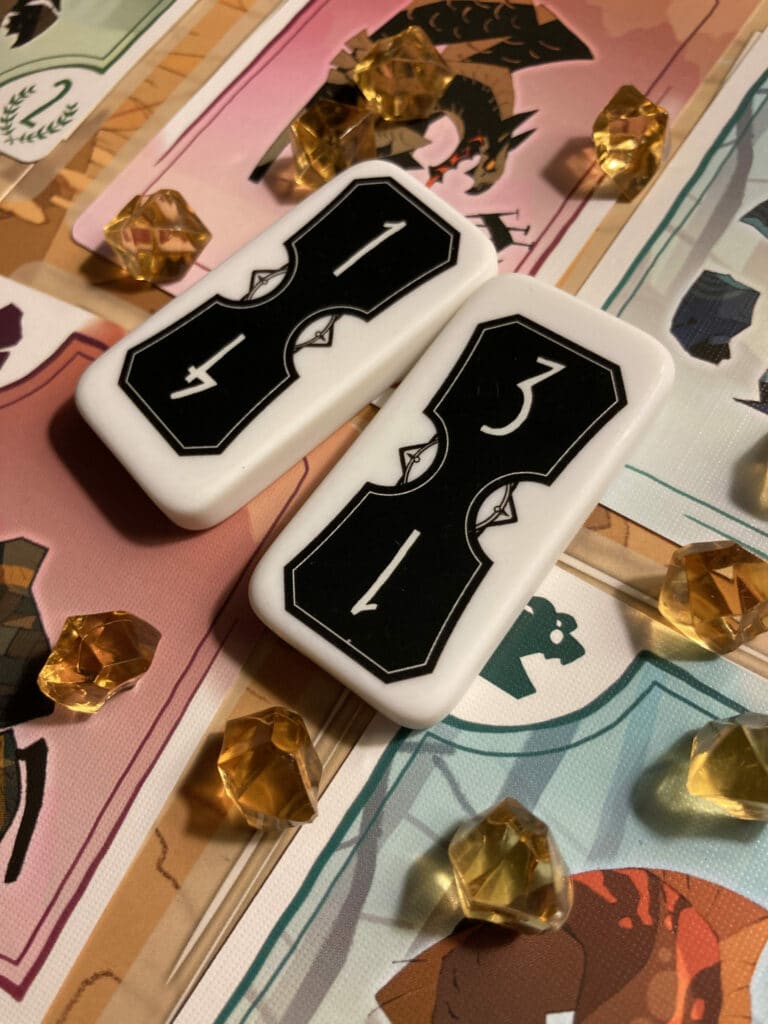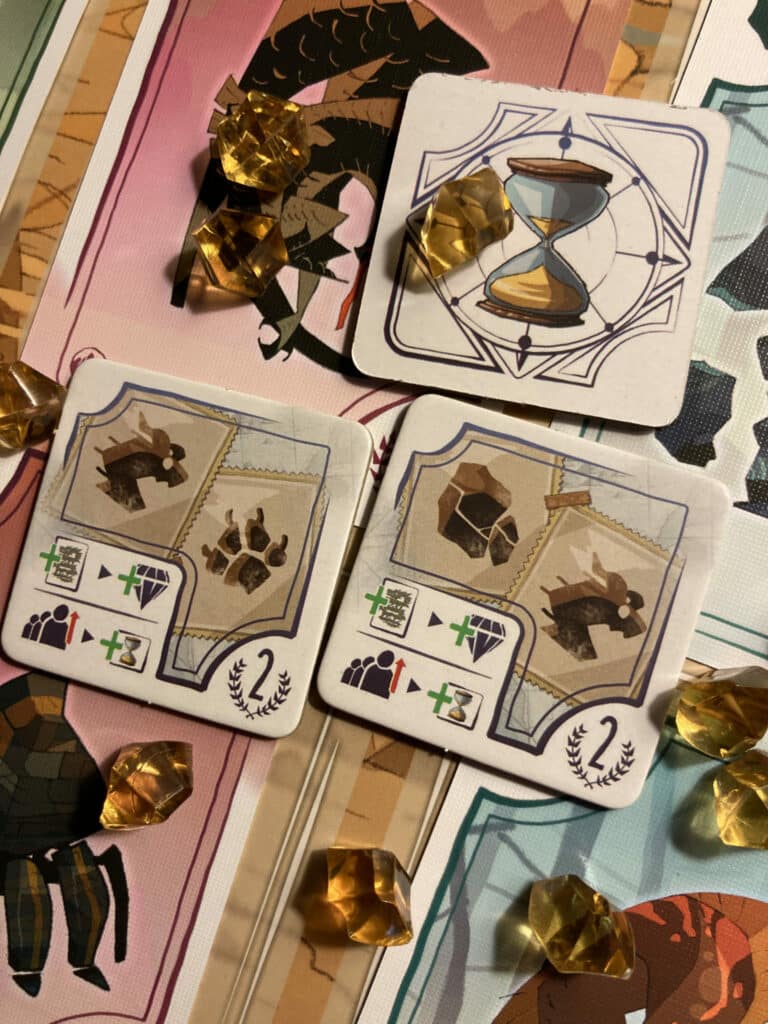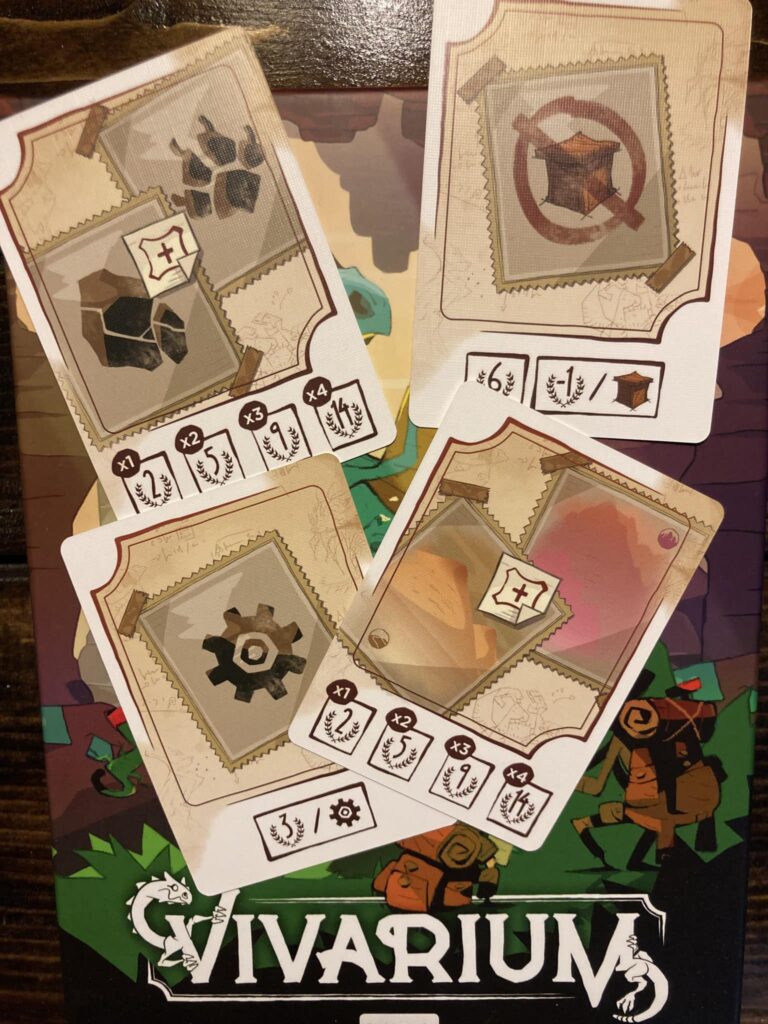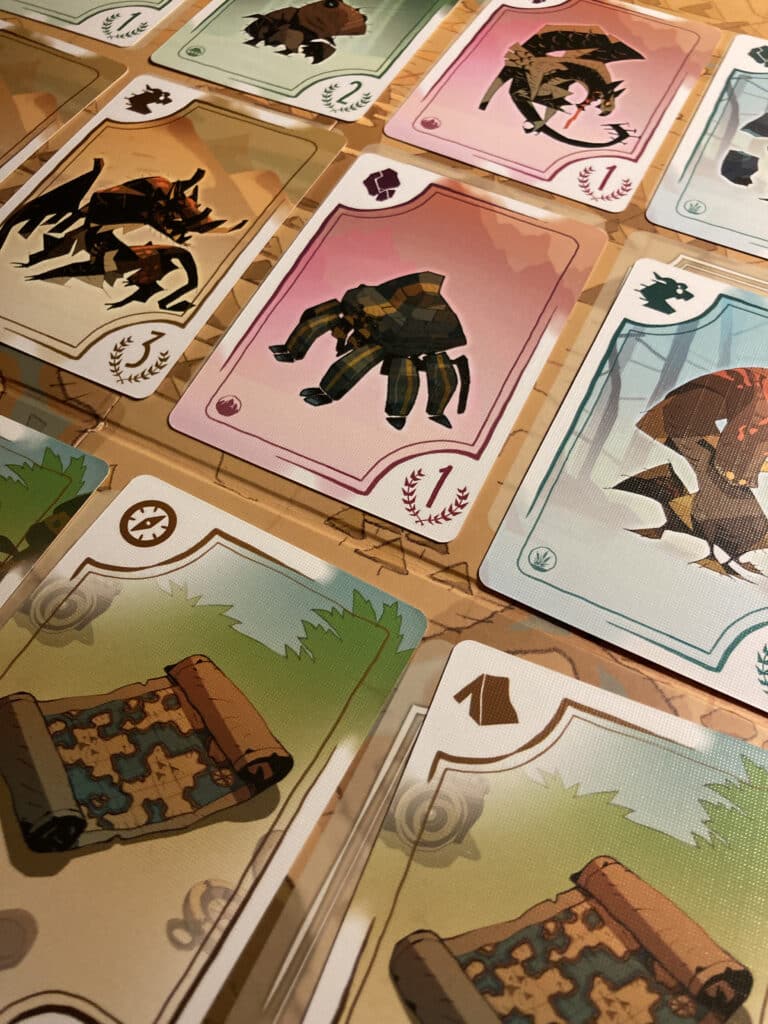Board games are often about discovery, and that’s precisely what you’ll be doing in Vivarium, a board game published by Studio H, where you’re a part of the first international society for science tasked with identifying all of the incredible species in a recently discovered underground Siberian cavern.
Using dominoes and a curated market of cards, you’ll need to fulfill contracts, gather equipment, and study creatures in order to further the scientific goals of the society.
So start thinking of how you’ll name all of the new species you discover in Vivarium!
Vivarium Gameplay
In Vivarium, players are all competing over a single rotating market of cards, consisting of two rows of Creatures, one row of Equipment, and one row of Contracts. On each turn, a player must first swap one of their dominoes with the communal domino by the game board. Then, you must either take a card from the market or take two gems.
When taking a card from the market, you must be able to form the requisite row and column using your two dominoes. For example, if you had a domino with 1-2 and one with 2-4, you could take any of the cards at 1-2, 2-1, 1-4, 4-1, 2-2, 2-4, or 4-2, where the first number is the row and the second number is the column.
Once players have taken two turns, then the round ends and the market is refreshed. Play continues like this, with each player selecting a domino and card, until the end of the 7th Round at which point the scores are tallied. Whoever has the most points from their creatures, gems, Priority tokens, and contracts wins the game!
Staking Our C.L.A.I.M. on Vivarium!
![]() Components
Components
It’s all about the dominoes in Vivarium! I really can’t remember the last time that I played a game that featured dominoes, but the ceramic feel of these tactile treasures is something else. As a seemingly innocuous component of the game, they really are central to the core gameplay and, as such, having them be such a high quality and durable item is both appreciated and necessary.
The translucent golden gems are also really fun to fiddle with, even if I usually don’t end up using them to raise or lower one of the numbers on my dominoes. It’s an upgrade over using a coin-like token or something similar.
Lastly, all of the cards are great quality for frequent movement from the board to the hand. I actually found that the board itself was vastly unnecessary for gameplay, but once again it was a nice inclusion that helps to elevate the entire production quality a tier.
![]() Luck
Luck
The strategy portion of Vivarium is quite interesting, because there are multiple things that players need to keep track of. First, players must always be aware of their contracts and what’s out on the board. Taking a new contract can be risky if there’s only one applicable card on the board for the current round, so weighing the possibility that the card gets taken must be considered.
Secondly, you also need to be constantly aware of what cards your dominoes give access to. You can also take this a step further to try and swap a domino to the center with numbers that might hinder your opponents, if you can deduce their strategies.
In my plays I found that people were more comfortable with risk-taking with Contract cards early on in the game, but future rounds saw the Contracts stagnate a bit more. People were more selective towards the end, taking Contracts that they could already fulfill to some extent.
There were also few moments when I saw the need for gems to alter my domino values. It’s nice to have the option, but it really comes into play at the higher player counts of three or four. In a two-player game, you might as well just count those gems as points from the start.
![]() Aesthetics
Aesthetics
There’s really only one aspect of Vivarium‘s aesthetics that you need to focus on and be aware of, but do it quietly so that Nintendo and Game Freak don’t hear you: these Creatures are basically Pokemon! All of these Creature cards feature incredible artwork of a unique creature from this underground cavern. Some of them look quite outlandish, but I suppose that’s the point, isn’t it?
Also, in my opinion there’s much more creativity in these creatures than the last few generations of Pocket Monsters, so that’s another glowing point for Vivarium.
The only potential aesthetic issue that I see is the coloring similarities between the orange and red cards, which are fairly similar in tone. But other than that, everything else is legible and fairly straightforward, even with the iconography that you have to learn upfront.
![]() Interest
Interest
Lately I’ve really been digging games that force you to draft your own scoring methods, like you do in Point Salad. In Vivarium, you certainly can get your points without taking more contracts, but it seems fitting to pick up one or two because they can be such great point boosters.
Another aspect of the game that I had to get used to was that the market doesn’t refill after every choice; it only refills at the end of each round. This is actually where all of the tension comes into play, because the market keeps deteriorating and your dominoes suddenly become very important for your second card selection of the round.
At the end of the day, this is very much a set-collection kind of game, so if that’s something that interests you then you may want to take a closer look. Since you do have the opportunity to adjust your strategy depending on the Contract cards you pick up, there’s a nice element of control that you have beyond just taking Creature cards from the market.
![]() Mood
Mood
The beginning of each Vivarium round is fairly carefree, but it’s that second card selection that gets tense. There are fewer cards to choose from, which is especially important if people took Equipment or Contracts with their first choice. There’s a feeling that every card chosen has a huge impact on your own choices, and the game as a whole.
Factor in the round-based Priority tokens that you also want to be focusing on which gives it a sort of Wingspan feel to the game as well with how the Round tokens work. It creates an interesting drive where, even if people are working towards completely different Contract goals, they’re still squabbling over the market for those Priority tokens.
Don’t be fooled by the art; there’s a level of ruthlessness in this game that juxtaposes against the niceties of working for an international society of research and science.
Vivarium: For Science!
Between Vivarium and the upcoming Vaalbara, Studio H suddenly has a lot to contribute to the set collection board game genre! You really couldn’t ask for better production quality to a game clocking in just under $25, and it packs a powerful punch in terms of gameplay.
Just remember that as you’re scooping up Creatures and grabbing shovels and fulfilling contracts that you’re doing all of it in the name of science! That’s what I say every time somebody blames me for taking a card that they wanted…it’s all for science!
You can pick up a copy of Vivarium from your FLGS when it releases on May 31st, or you can preorder from Hachette Boardgames directly.
[Disclaimer: Nerds on Earth was provided a copy of Vivarium from Hachette Boardgames in exchange for an honest review.]


